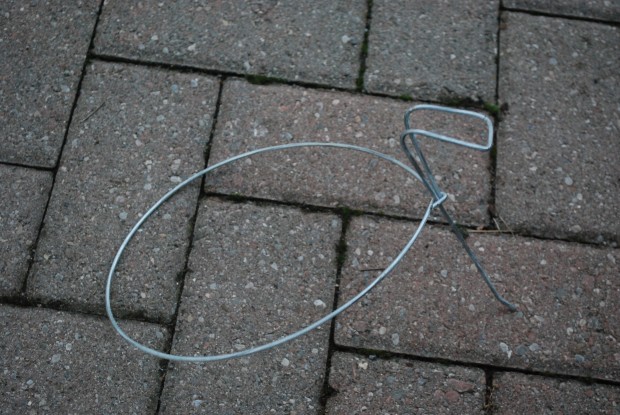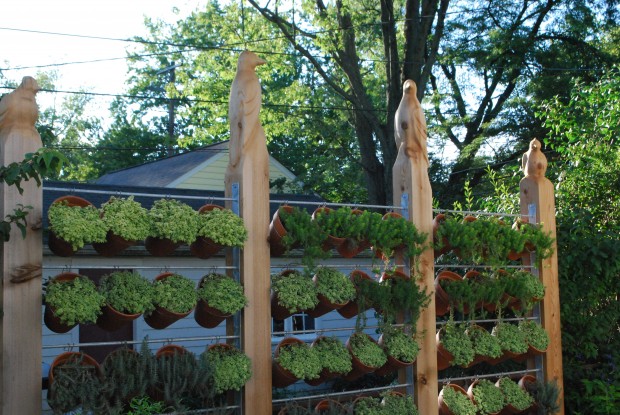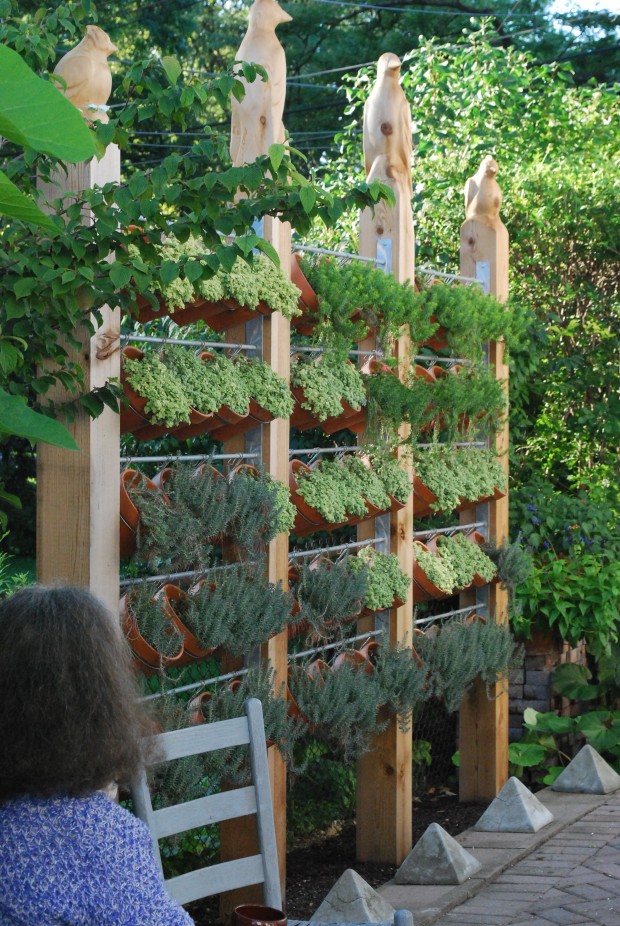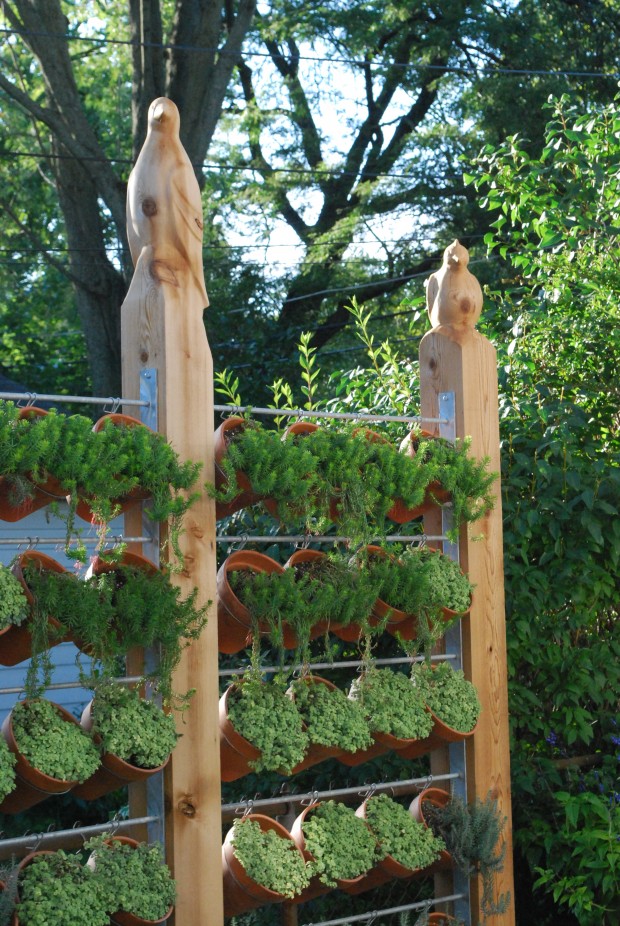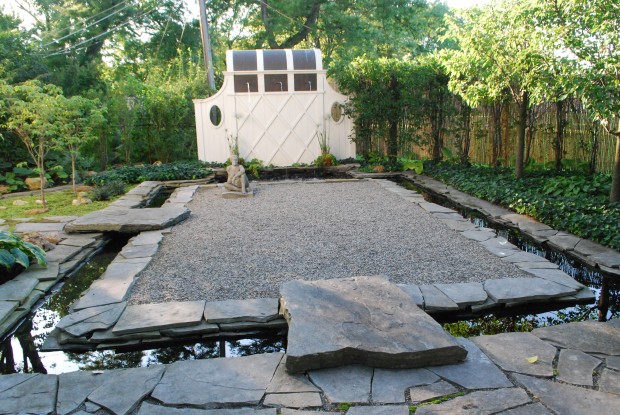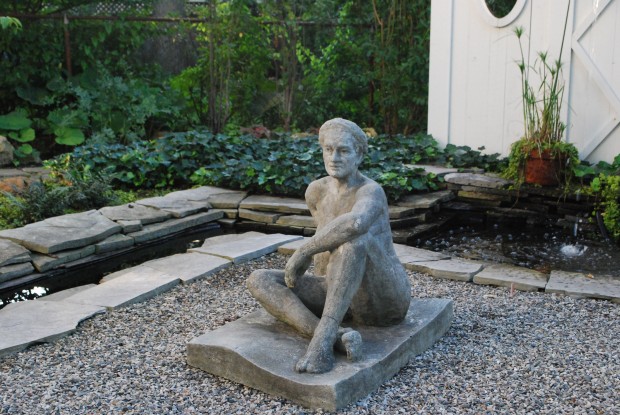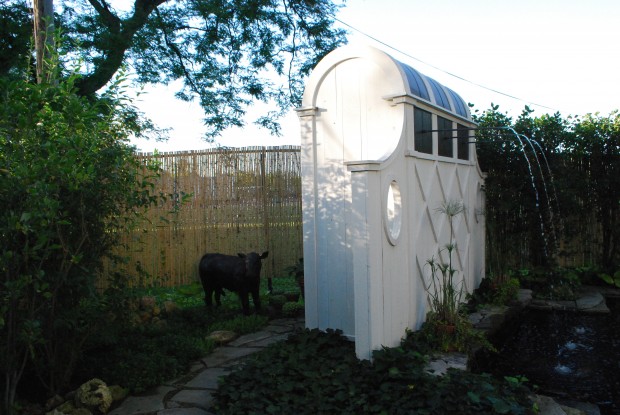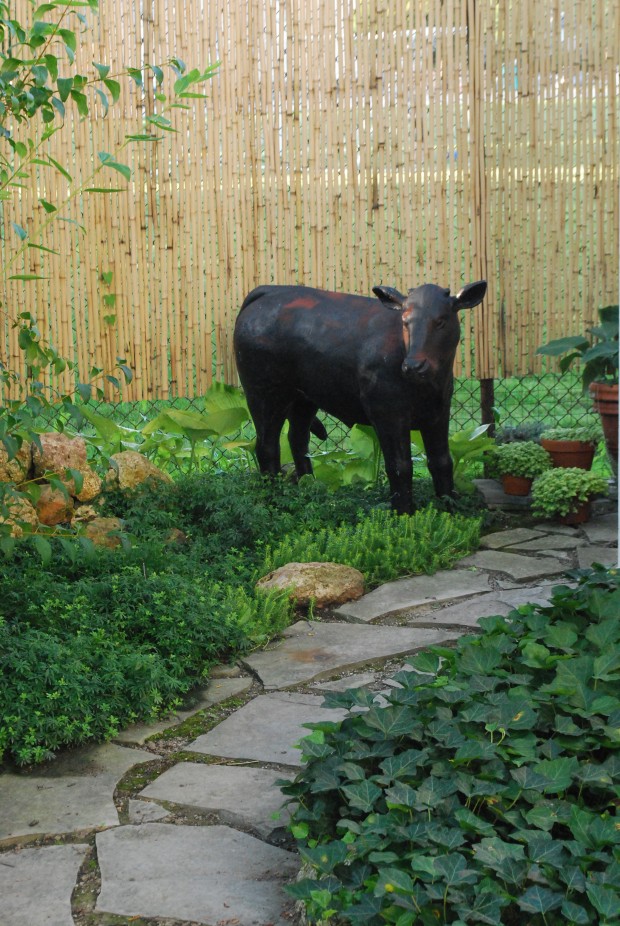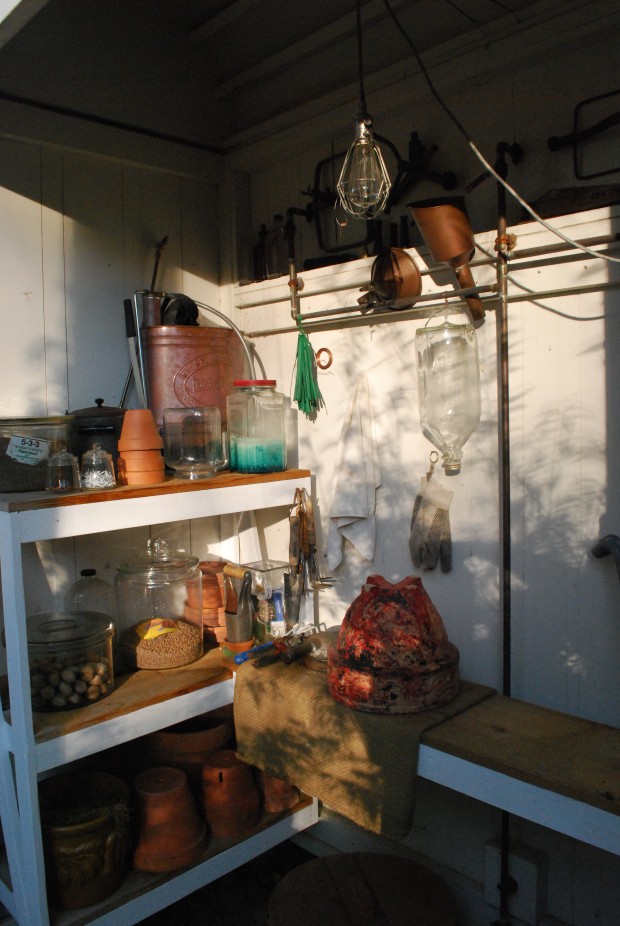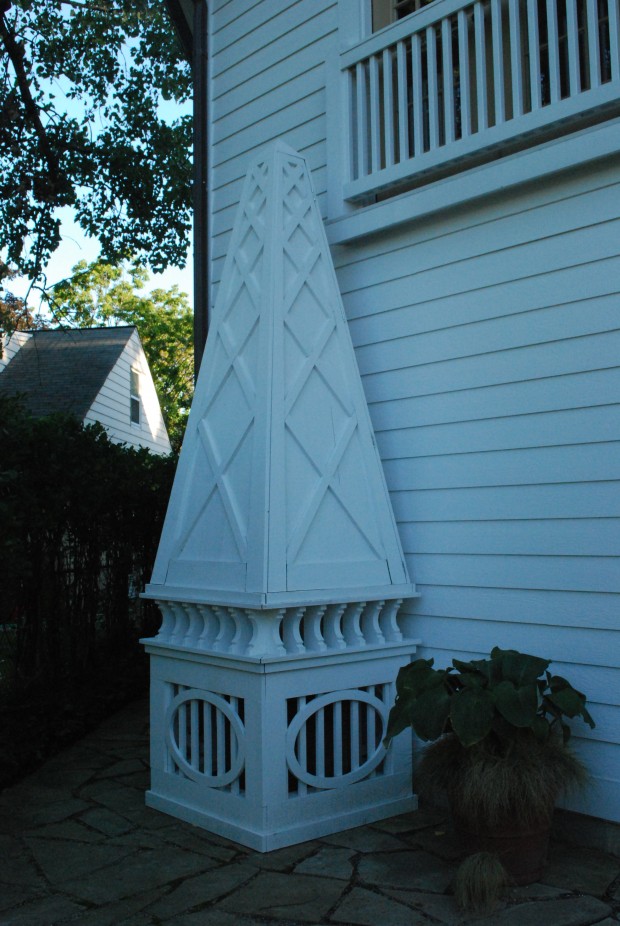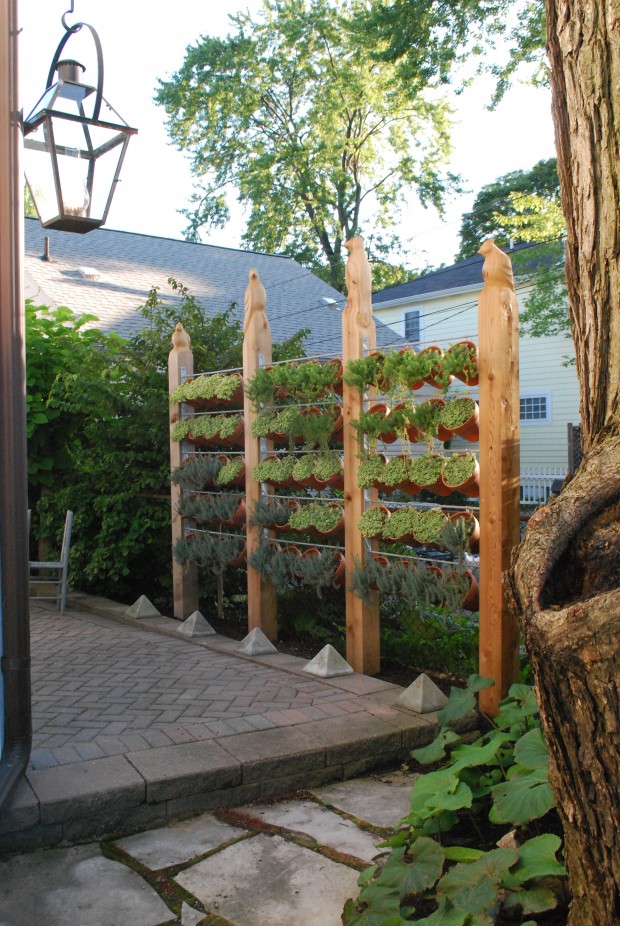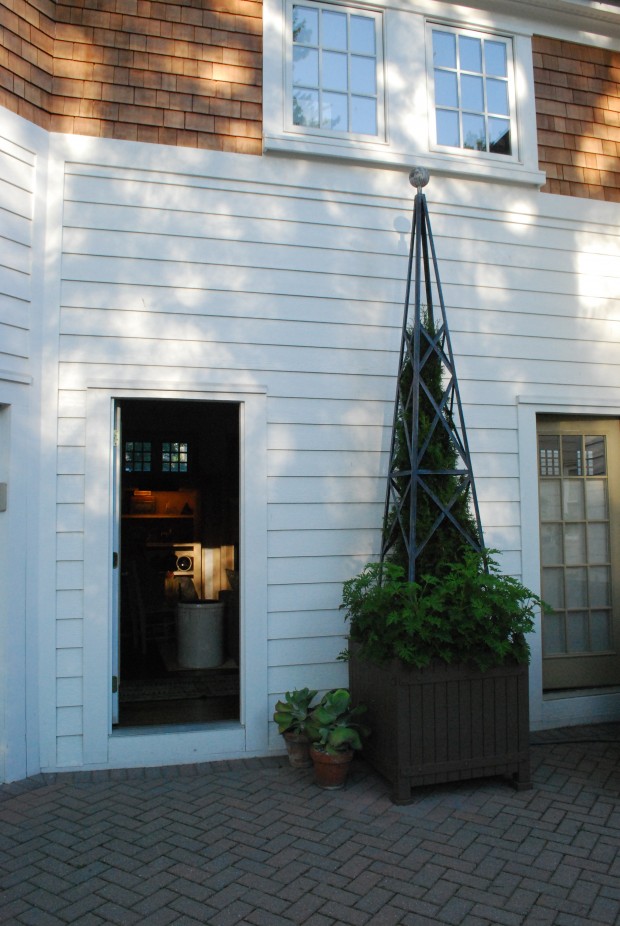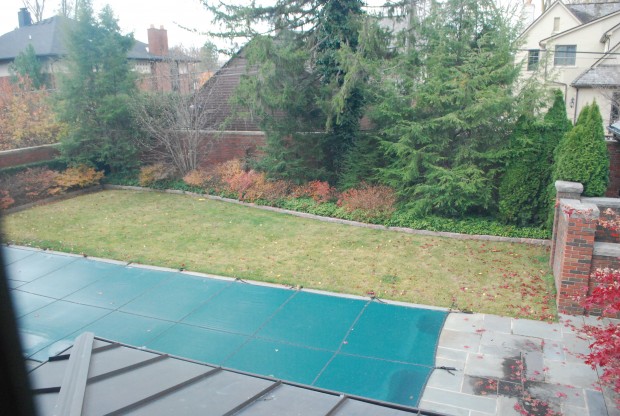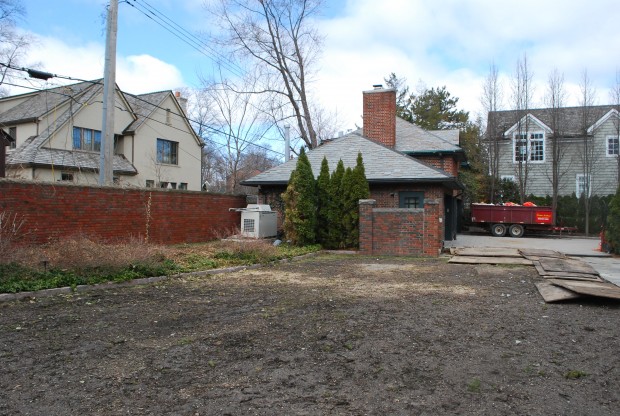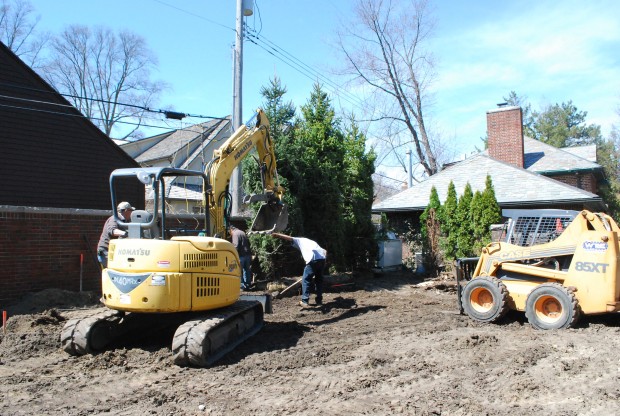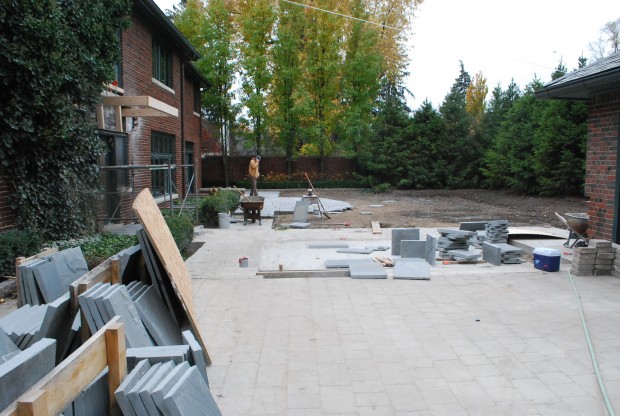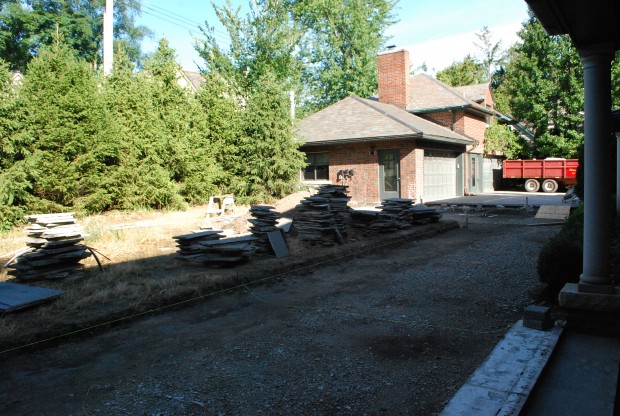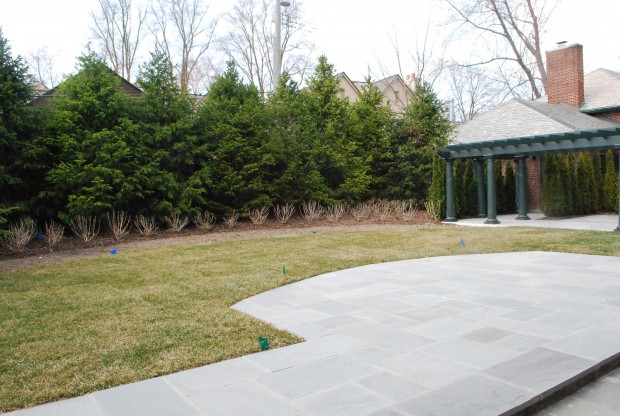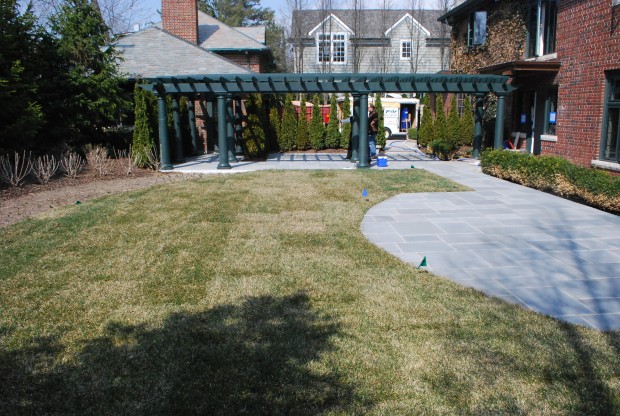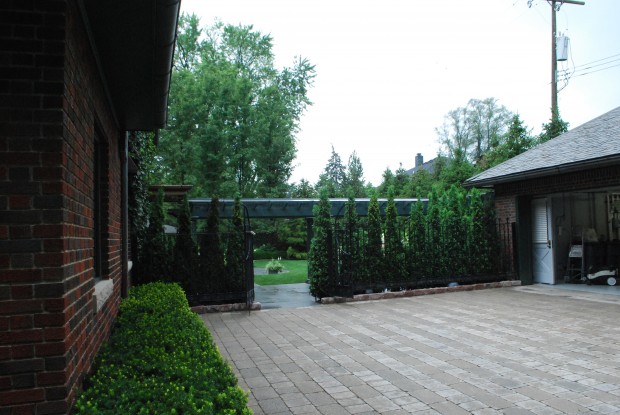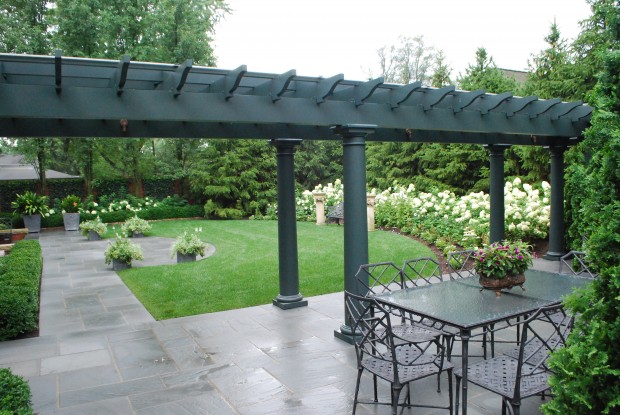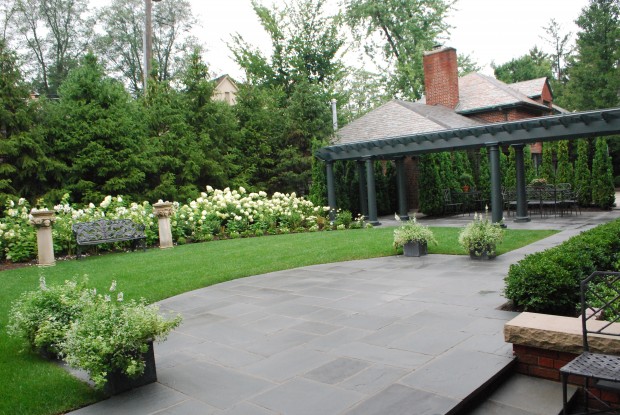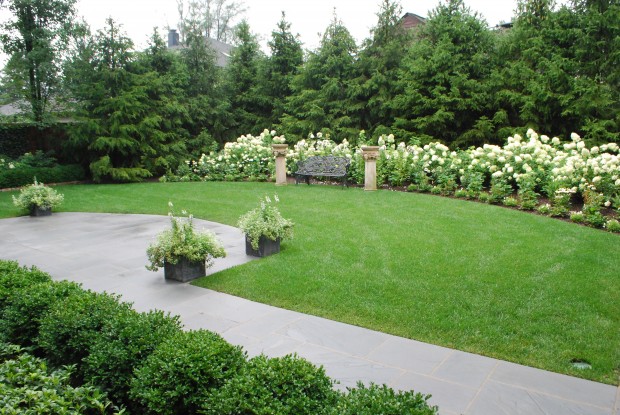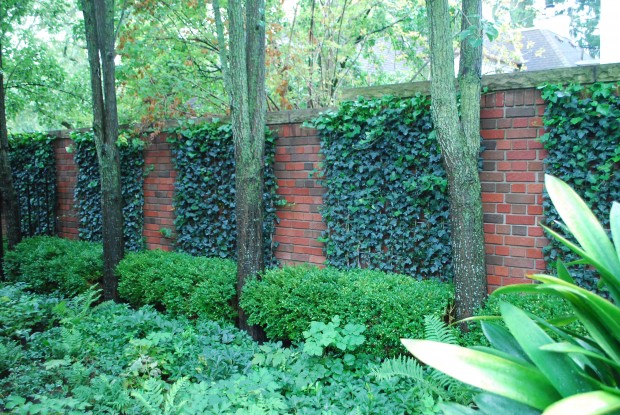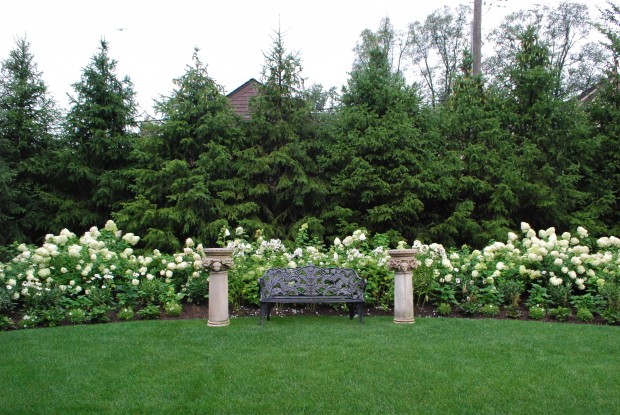We had dinner over the weekend a the home of a good friend. Barry Harrison is a design principal with Art-Harrison, a interior design studio well known in my area. In addition to their interior design practice, they manufacture a line of fine furniture. Each piece is meticulously hand crafted and carved from fine hardwoods. Interested to read more? www.artharrison.net. Barry is a highly skilled designer, cabinetmaker and wood carver, as evidenced in his own garden. Years ago Barry spent some time at Ford Motor Company-he could draw an entire headlight assembly for a owner’s manual-free hand. Think this part through-a freehand drawing of a headlight assembly? His talents are extraordinary. As much a designer as he is an artist, one part of Barry’s garden began with this simple part-a galvanized steel hook that would hold clay pots.
Barry lives in an urban neighborhood on a very small piece of property. Every gesture he makes has to work-there is no room really for unresolved design. This corner of his driveway is just a few feet from the garage doors, meaning he visits this spot every day, both going and coming. The distance from the edge of his drive to the lot line at this back corner is 12 inches at best. There was no option for screening plants in such a small space, but there was an option for a screen.
This ingenious green screen began with four cedar posts, the tops of which he carved into a pair of guinea hens, and a pair of ravens. There was enough space to sink the posts deep into the ground. He engineered a series of galvanized metal plates and rods, which would hold the galvanized hooks shown the the previous picture.
The terra cotta pots were planted with succulents, and hung on the galvanized steel rods. The watering takes some time and attention, but the plants seem to be doing just fine. He’ll store the pots in his garage, or bury them in leaves for the winter. I admire this inventive and low tech screening that is also so great looking. The plants seem to be perfectly happy-spilling out of the downside of each pot.
His succulent wall is beautifully engineered-and beautiful to look at. Once he waters the top row, the drain water serves to water the row below, and perhaps the row below that. Given that the screen is only 6 feet tall, it can easily be handwatered. The succulents are not asking for much.
The rear yard is dominated by a gravel terrace, completely surrounded by water. Though the width of the water is slight, the pool is 24 inches deep on 3 sides, and 36 inches deep at the far end. This water depth, and the ability to swim in long runs, around and around, keep his koi happy. Youy would never know that a city park was just the other side of the bamboo screening. The structure at the far end of the pool serves a dual purpose. From this side, the wood and copper fountain with copper jets does a great job of aerating the water for the fish. This large, architecturally striking feature organizes every other element of the landscape.
A single stone sculpture on the gravel terrace keeps a small space from looking cluttered. Easy maintenance perennials such as baltic ivy, petasites, angelina, creeping jenny and ferns makes the garden easy to look after. The koi? Barry has a 220 acre farm in Kentucky-the koi he raises there are cared for by his parents, and shipped to dealers and koi afficianados all over the country.
The fountain recirculates the water in the pool. The placement of this feature on an angle to the corner of the property creates a small niche garden which features a series of pots, and some of Barry’s geode collection. But the star of the show, at the end of a stone path-a cast iron cow.
Even the smallest space in a garden can make a big impact. An inveterate collector of vintage and antique objects, I am sure he spoke for this sculpture without hesitation. This vignette is almost all of the way to another space-the garden shed.
Barry’s fountain doubles as a garden shed, which holds most of his tools, pots and soil, in addition to the filtration system and fountain assembly. This very utilitarian space is completely hidden from every vantage point in the rear yard landscape.
At the opposite end of the garden-the air conditioner. The air conditioner is under this painted wood obelisk, yes. One panel is hinged, and folds down, making service a snap. In the top of the obelisk-long handled gardening tools.
The view out of the back yard-another view of that succulent wall.
The house and garage meet at an angle in the back, near a pair of doors. A giant painted oak box with a steel tuteur is the only nod to the garden in a fairly large paved space. Only Barry would think to faux shrink wrap an arborvitae in plastic, and place the steel tower over it. Not one branch got broken when the pot was planted. At some point, the plant will grow through the steel, and be trimmed flat. Clearly he is fond of making a few big gestures on his small property, rather than lots of little ones.
There are as many great ideas for a beautiful garden here as I have seen on on properties many times this size. Unlike a property which is defined by its boundaries, it’s hard to tell where unlimited creativity and imagination of this caliber might decide to go next.
